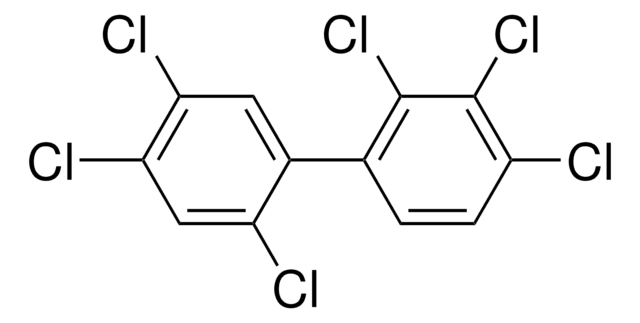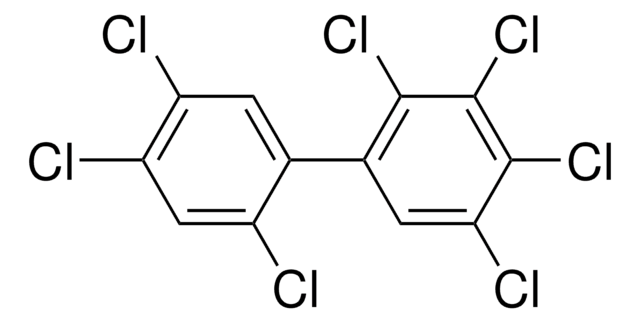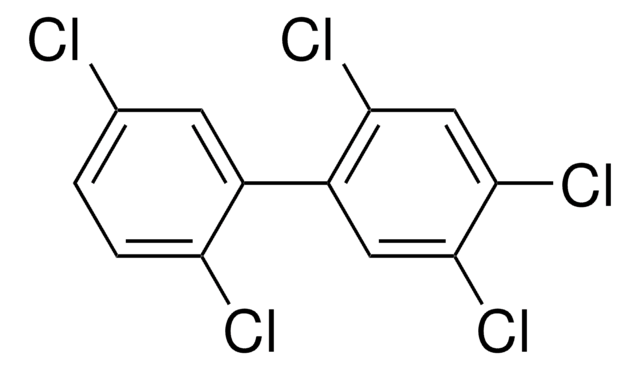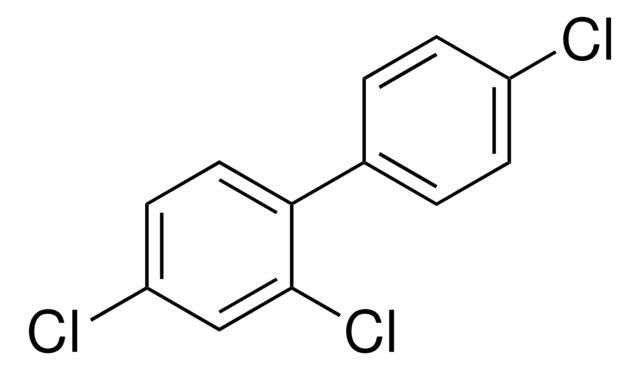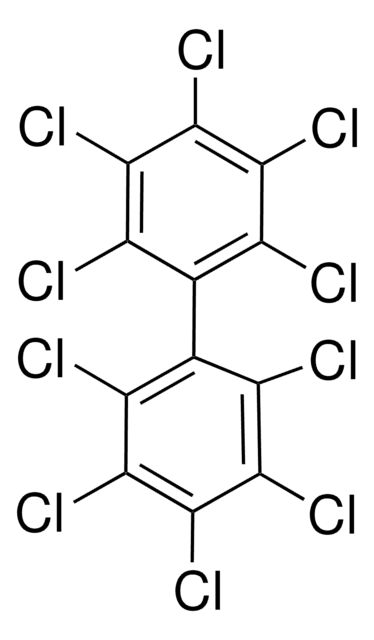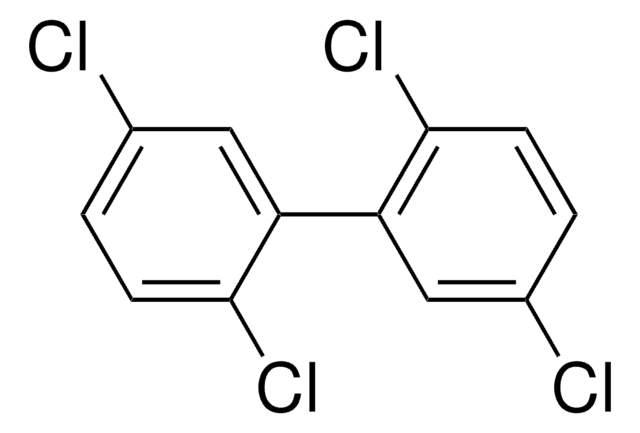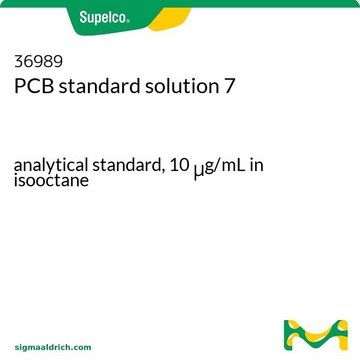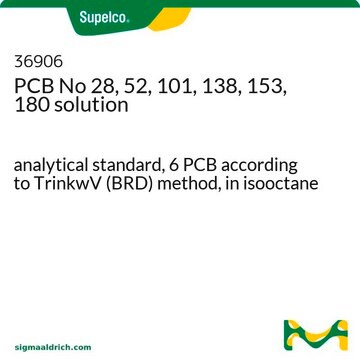おすすめの製品
グレード
analytical standard
品質水準
シェルフライフ
limited shelf life, expiry date on the label
テクニック
HPLC: suitable
gas chromatography (GC): suitable
アプリケーション
environmental
フォーマット
neat
SMILES記法
Clc1cc(Cl)c(cc1Cl)-c2cc(Cl)c(Cl)cc2Cl
InChI
1S/C12H4Cl6/c13-7-3-11(17)9(15)1-5(7)6-2-10(16)12(18)4-8(6)14/h1-4H
InChI Key
MVWHGTYKUMDIHL-UHFFFAOYSA-N
類似した製品をお探しですか? 訪問 製品比較ガイド
アプリケーション
Refer to the product′s Certificate of Analysis for more information on a suitable instrument technique. Contact Technical Service for further support.
シグナルワード
Warning
危険有害性情報
危険有害性の分類
Aquatic Acute 1 - Aquatic Chronic 1 - STOT RE 2
保管分類コード
11 - Combustible Solids
WGK
WGK 3
引火点(°F)
Not applicable
引火点(℃)
Not applicable
個人用保護具 (PPE)
Eyeshields, Gloves
適用法令
試験研究用途を考慮した関連法令を主に挙げております。化学物質以外については、一部の情報のみ提供しています。 製品を安全かつ合法的に使用することは、使用者の義務です。最新情報により修正される場合があります。WEBの反映には時間を要することがあるため、適宜SDSをご参照ください。
PRTR
特定第一種指定化学物質
労働安全衛生法名称等を表示すべき危険物及び有害物
名称等を表示すべき危険物及び有害物
労働安全衛生法名称等を通知すべき危険物及び有害物
名称等を通知すべき危険物及び有害物
Jan Code
35602-BULK:
35602-10MG:
35602-VAR:
35602-1EA:
35602-1G:
最新バージョンのいずれかを選択してください:
Cristina L Quinn et al.
Environment international, 49, 83-91 (2012-09-18)
Concentrations of persistent organic pollutants (POPs) in Inuit populations have been observed to decrease over the last decade. The main objective of this study was to develop a methodology to quantify the potential influence of intergenerational dietary transitions on human
Xue Shi et al.
Journal of proteome research, 11(7), 3805-3815 (2012-06-13)
Polychlorinated biphenyls (PCBs) are persistent organic pollutants and have been associated with abnormal liver enzymes and suspected nonalcoholic fatty liver disease (NAFLD), obesity, and the metabolic syndrome in epidemiological studies. In epidemiological surveys of human PCB exposure, PCB 153 has
Lars Rylander et al.
Chemosphere, 88(7), 828-831 (2012-05-02)
Persistent organochlorine pollutants (POPs) have in epidemiological studies been associated with health hazards. The exposure window might be crucial and it is, accordingly, important to analyze exposure concentrations in samples collected at the window of interest. This makes the use
Omar Cauli et al.
Toxicology, 311(1-2), 61-68 (2012-12-12)
Polychlorinated biphenyls (PCBs) and methylmercury (MeHg) are persistent organic pollutants accumulating in the food chain. Pre- and neonatal exposure to these neurotoxicants may affect brain development and lead to long-lasting alterations in cerebral function, which can result in motor alterations
Beatriz Valera et al.
Neurotoxicology, 33(5), 1067-1074 (2012-12-12)
Studies conducted in the Faeroe Islands and Japan suggest a negative impact of mercury on heart rate variability (HRV) among children while the results regarding blood pressure (BP) are less consistent. To assess the impact of mercury on HRV and
ライフサイエンス、有機合成、材料科学、クロマトグラフィー、分析など、あらゆる分野の研究に経験のあるメンバーがおります。.
製品に関するお問い合わせはこちら(テクニカルサービス)